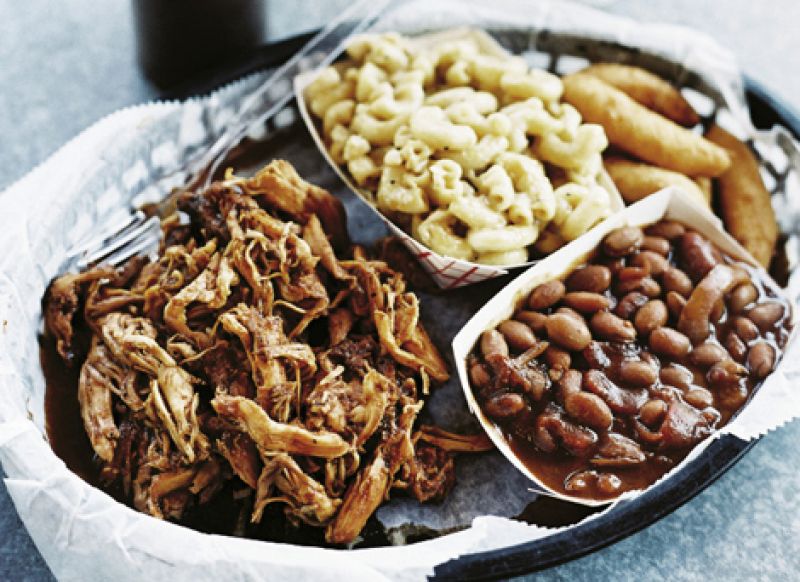
We could speak of wood—the variations of hickory, pecan, even oak—or we could quarrel over the merits of roasting a whole hog instead of pork shoulders or Boston butts. But the secret to South Carolina barbecue lies in the sauce, or sauces, at hand. Take your pick: tomato-tinged, vinegar-flavored, or the thick, mustard-based sauce favored by our German forebears.
“It’s extremely diversified,” says Jamie Westendorff, who has run Charleston Outdoor Catering for 30 years. “Go to Orangeburg, and you’ll find mustard sauce; up the coast, and you’ll find the vinegar stuff. Then you have the influx of people who love the tomato-based products.”
This sauce variety distinguishes the Palmetto State from others, such as North Carolina (vinegar or tomato-based sauces), Texas (extra chili peppers, please) and Kansas City (rich and red). Indeed, any number of nearby barbecue joints—Home Team, J.B.’s Smokeshack, Music Man’s Bar-B-Que in Moncks Corner, or Po’ Pigs Bo-B-Q on Edisto—offer at least three sauces tableside. Same goes for many pig pickins. “What we do is cook the pig with peppers and vinegar,” Westendorff says. “Then we have vinegar, mustard, and tomato-based sauces on the side.”
What’s poured over your roasted pork just depends on your preference. “I probably like the vinegar the best,” says award-winning pitmaster Jimmy Hagood of BlackJack Barbecue. “But because I’m in the business, I’ll go back and forth. I like coating it with a little mustard or tomato base for variety’s sake.”
It seems that mustard sauce is what mostly colors our ’cue. Attributed to German colonists arriving in the 1700s, it is golden, tangy, and sweet, imbued with brown sugar or molasses and seasonings. “Frankly,” Hagood says, “I think it comes down to the mustard sauce, which is the most unique.”
Factoid: Pig pickins, or roasting whole hogs, have been common in these parts since well before the Civil War. Some etymologists claim the word barbecue can be traced to the early 1500s, when Cortez happened upon the Aztec Indians. The natives introduced him to the method of cooking, and the food itself, which became known as barbacoa in Spanish.